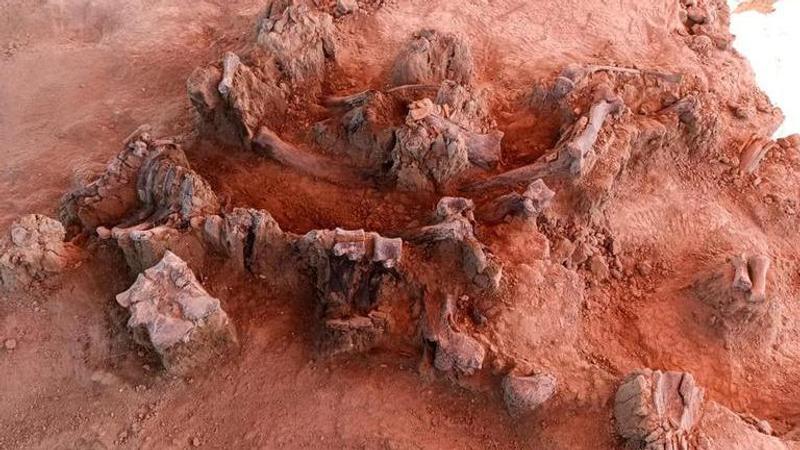Published 16:23 IST, May 23rd 2020
Mexico: Mammoth bones and human burials found near construction site of new airport
Mexican archaeology department has discovered remains of 60 mammoths and 15 human burials near the construction site of the new General Felipe Ángeles airport.

The Mexican archaeology department has discovered remains of 60 mammoths and 15 human burials near the construction site of the new General Felipe Ángeles International Airport. The discovery of bones of 60 mammoths and as well as 15 human burials are from the pre-Hispanic times, according to the National Institute of Anthropology and History (INAH). According to reports, the INAH has opened 23 exploration fronts on the land where the new airport is being built which is carried out with the logistical and financial support of the National Defense (Sedena).
The discovery
The national coordinator of Archeology of the INAH, Pedro Francisco Sánchez Nava, has specified that the skeletal remains were located in three exploration areas and that they are still stabilizing, analyzing, and classifying. Pedro further clarified that it is not yet possible to determine how many bones could be complete.
The mammoth specimens reportedly belong to the Mammuthus columbi species - abundant in North America during the Pleistocene period, it was a geological one concluded 12,000 years ago, and include males, females and young, which probably died when they got stuck in the lake Xaltocan, because its depth varied and even dried up until it became a swampy space, according to the INAH.
So far, no findings have been recorded on the land that leads to the rethinking of the construction site, either in whole or in part. Rather, the works have allowed the INAH a research conjuncture in a space where, although the existence of skeletal remains was known, they had not had the opportunity to locate, recover and study them," said Salvador Pulido Méndez, director of the INAH Archaeological Salvage.
(Image Credit: INAH/Webpage)
Updated 16:23 IST, May 23rd 2020




